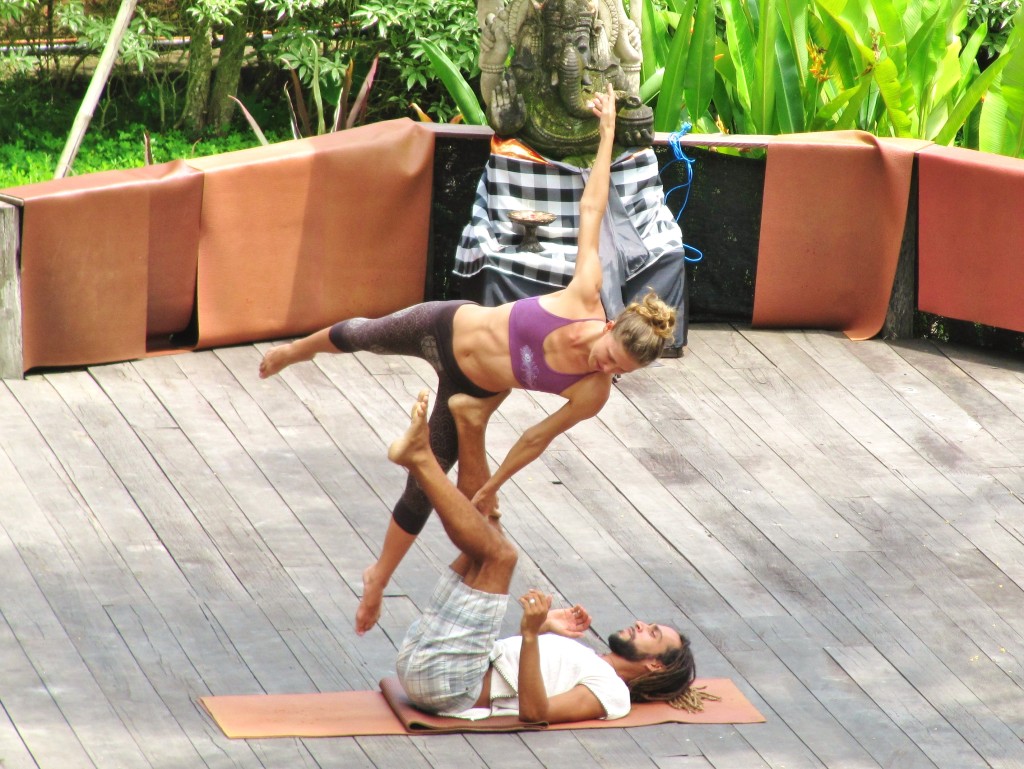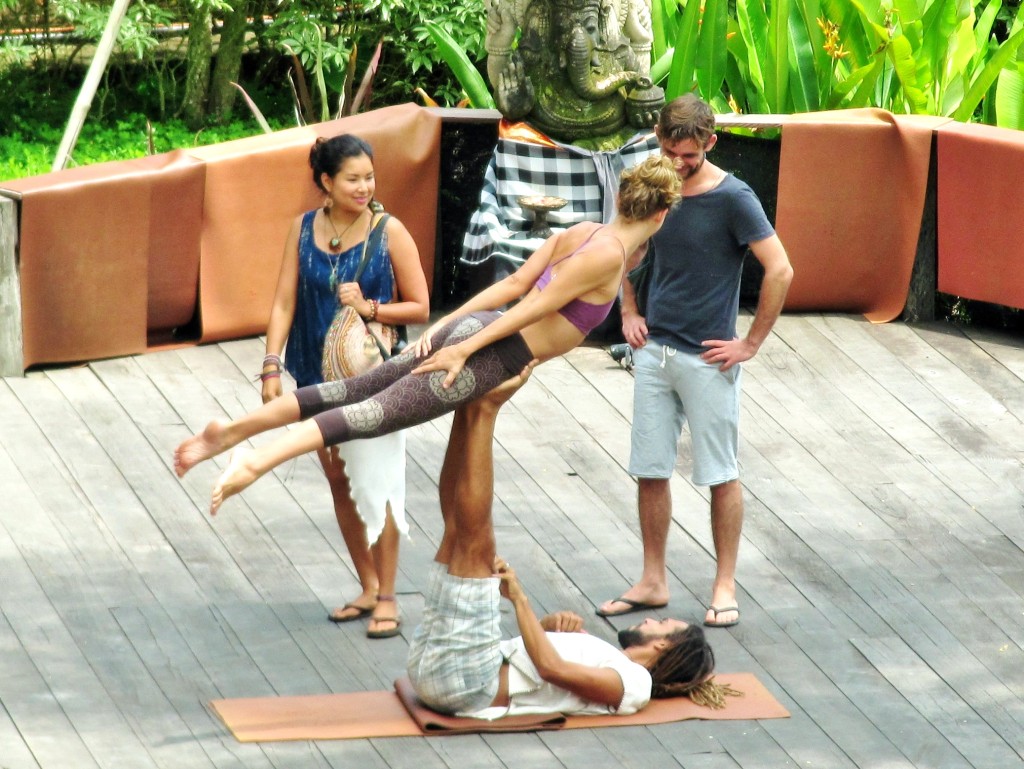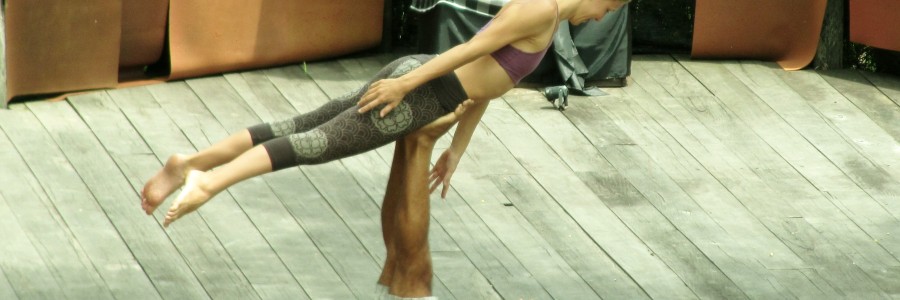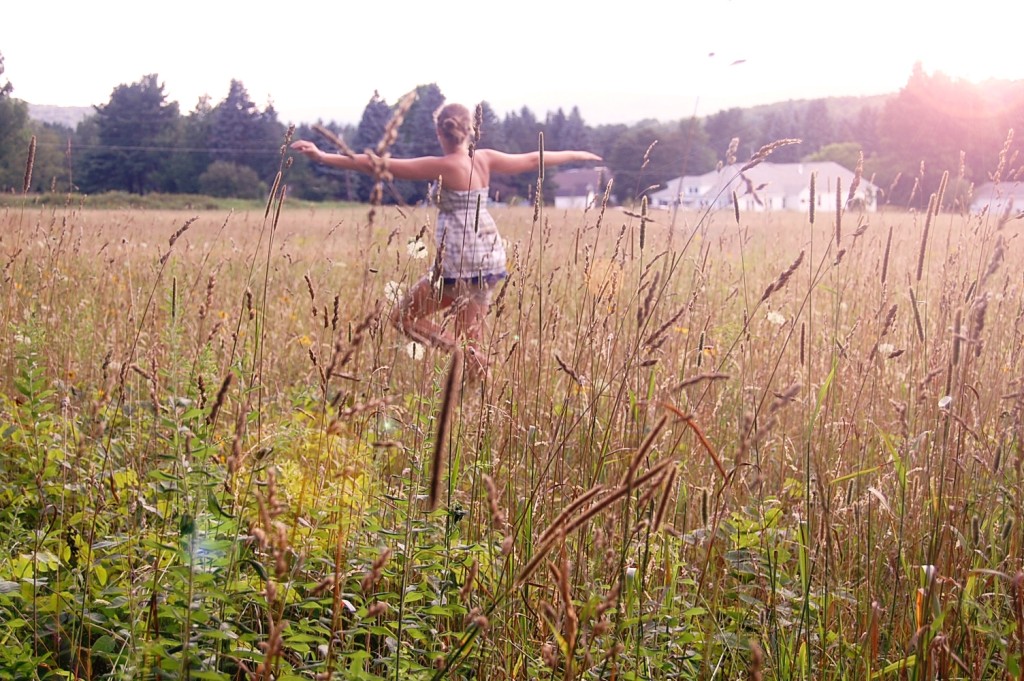What happens if you combine yoga, acrobatics and Thai massage? Acroyoga is born!
It is a very new sport, with the term used for the first time in 1999 by Acroyoga Montreal in Canada. In its beginning stage it was used in performance arts and dance. Later in 2003, Jenny Sauer-Klein and Jason Nemer from Acroyoga practice incorporated healing arts.
Acroyoga is a type of partner yoga combining concepts of acrobatics with yogic principles. The practice consists of three persons, one taking the role of a so-called flyer, the other functions as a base and a third person is the spotter. The base assists the flyer in various poses and the spotter supervises the movements and can help if the base and the flyer are unstable.
The base can assist the flyer in stretches and can knead him or her – these practices are used during Thai massage. Primarily, the base’s legs, core and arms get strengthened and depending on the flyer’s position their back is released, muscles are stretched and strengthened.
5 reasons to do Acroyoga
1. Every Body can do it! Yes, you too!
Have you ever seen people doing acroyoga and thought it is only for acrobats? Did you think that only flexible, strong and daring people can do it? Nope! Most of acroyoga’s magic lies in the bone stacking technique. This means that basically every body type can be lifted since much of the stability lies in the structure.
2. It’s especially rewarding for beginners!
It can be done by every level of experience. You learn while doing it, so there is no reason to think you are not good enough to do it. Seeing impressive-looking lifts may seem intimidating, but only by trying, making mistakes, practicing more and more you will eventually be able to do these poses!
3. It’s a fun way to get fit!
Doing yoga and acrobatics simultaneously helps to strengthen the body by using the benefits of both sports. The yogic practice of synchronizing the breath with the movement helps to oxygenate the body and increases focus, which in turn helps with balancing to successfully do the poses. The Acroyoga practice helps to build stronger arms, legs and core and it lengthens and stretches the spine.

4. Getting out of your comfort zone!
It is not just a workout that will make you more flexible, balanced and strong. Doing new challenging activities helps to boost self-confidence.
Going to an acroyoga class or meet-up does not mean you have to bring a partner. As long as there are more than two people, acroyoga can be done! It is wonderful to see couples, friends and people that just have met trying new, challenging things together. Between people bonds are made or strengthened and a great environment to overcome boundaries together is set.
5. It improves understanding between one another and builds community
You have to feel the other person to form a stable structure and to lift him or her up. Understanding the other person’s body teaches you about him or her. Both flyer and base are dependent on one another to make the movements work. Otherwise the flyer will fall on the base, which nobody wants!
Communication and trust form the basis to successfully doing acroyoga. Many people may agree that those are also the basis for a healthy relationship. To zoom out this understanding, good relationships between groups of people helps to form healthy communities!

Have a look at these beautiful acroyoga videos:
Ready to start flying?
Here is an Introduction and a youtube learning series to get started!



